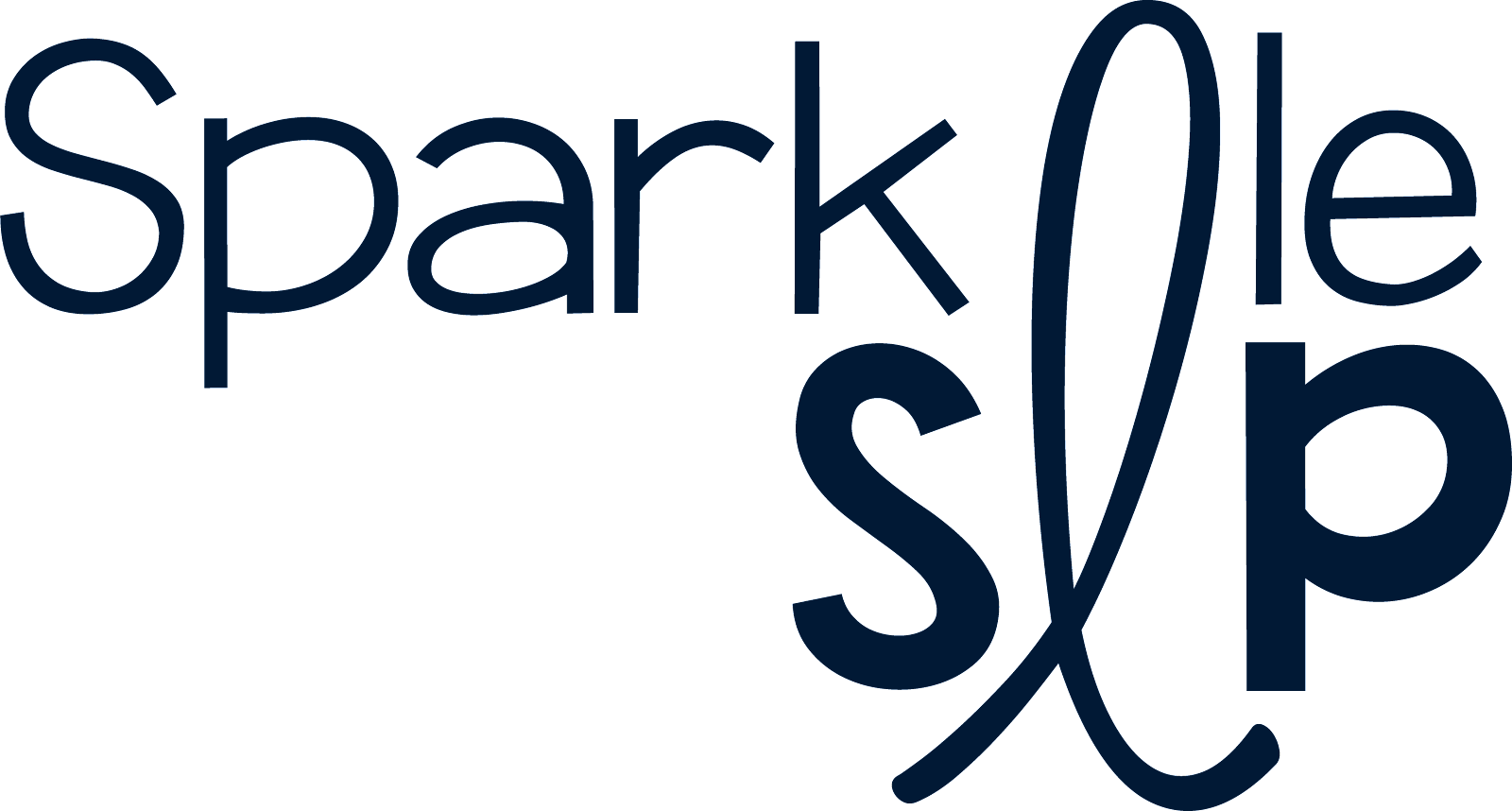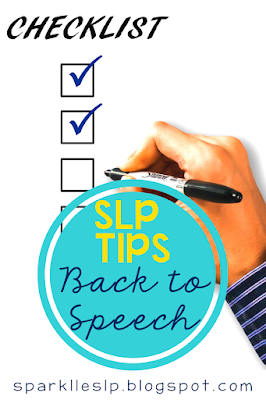I have learned NOT to enter my first week in speech without my trusted behavior support visuals. I have a whole filing cabinet drawer of visuals, one that you would get lost within, yet I have developed a few tried and true favorite visuals that make my first week and beyond a bit more successful! I'm sharing my top 4 categories of behavior support visuals. You can find the entire packet here (linked in each section below, as well).
SCHEDULES
Did you know that visual schedules help to alleviate stress and anxiety students feel about expected routines? They greatly help with comprehension of tasks. Visual schedules also help students with ASD in becoming independent of adult prompts and cues (Mesibov, Shea, & Schopler, 2005).
I use a simple 4 part schedule for my speech therapy sessions. I can easily switch it out for the session activities. Students can move each task to the finished spot. Despite my best intentions, not all of my students love staying in my sessions, so knowing there is an end is motivating.
TOKEN BOARDS
We all work for rewards and reinforcement. Whether you finish your work before you eat your chocolate bar, do your have-to-dos before your want-to-dos, or push through to meet a deadline for a promotion, we all find incentives motivating.
Allow your students the same benefit of working to accomplish a task and be rewarded for their efforts. Easily use token boards by offering intermittent reinforcement with an end reward in mind.
GOALS
1. CREATE
- BULLETIN BOARDS: If you are lucky enough to have a bulletin board in your speech room, fill it up with evergreen decor, perfect for the entire school year. Add some modern rustic decor or abstract colors found within my Back to Speech product.
- PARENT LETTER: Consider writing a beginning of the year parent letter. I like to have this initial contact to remind parents about their child's participation in therapy, to share my expectations and any logistical information, as well as encourage home practice. I have a sample parent letter and template in my Back to Speech packet.
- IEP AT A GLANCE: Prior to the first day, I make sure to share with teachers and staff an IEP at a glance for each student. This summary of goals, services, and accommodations will give the teacher a quick reference regarding speech and language needs of their students. I use one generated from our IEP software.
- FIRST SESSION ACTIVITY: I always plan a first day in speech activity that includes goal setting and gathering of baseline. You can check out my Speech and Language Snapshot or Goal Setting Foldable Activity within my Back to Speech packet or my Back to Speech Lap Book.
2. ORGANIZE
- CASELOAD: I always go through files to create a caseload list with student names, date of birth, grade, teacher, IEP and evaluation deadlines, type of service delivery and minutes. I use this information to create my own caseload spreadsheet in Google Sheets™️ so I can update it live throughout the year.
- BILLING: Whatever I can do to add information into billing software, I do! SLPs know how time consuming billing can be and how easy it is to get behind. Every little bit of organization helps.
- LOGS/LISTS: I organize paperwork for logging lesson plans, testing, and screening. I keep these in a binder and add to them during the year. Check out my SLP Planner and Workload Forms packets for a variety of logs. My favorite is a my digitally fillable weekly checklist. I never start a week without it completed!
- DEADLINES: For those IEPs and evaluations that will expire quickly upon the start of school, I add the student folders to my working file and attach sticky notes as flags to remind me of deadlines. The start of a new school year is always fast-paced and staying on top of deadlines is a must.
- ASSESSMENT: I also organize folders for screenings and testing. I keep different colored 2-pocket folders for quick grab and go. For screenings, the tools I use are right in the folder. The testing folder is a working folder with assessment protocols.
- THERAPY BAG/BIN: Since I often push into classrooms, I organize my therapy bag with must have supplies. Many of my go to materials stay put all year, including this Speech Sound Board which you can grab for free.
3. COPY
- KINDERGARTEN SCREENING: We screen all kindergarten students in my district, so I copy kindergarten speech and language screening forms to immediately tackle this task at the start of the year. You can find my kindergarten screening tool here with both printable and digital options!
- WORKLOAD FORMS: I restock copies of my most used forms, including homework logs, observation forms, 100 word samples, screening permission, parent communication logs, as well as baseline and progress monitoring tools. You can find some of these in my Workload Forms packet.
4. PREP
- STUDENT FOLDERS: I prep student folders for my youngest students. I print labels for name, therapy day/time, and to-do and finished for the inside pockets. I also add a home communication session update log. You can also find these materials in my Back to Speech packet.
- SPEECH TIME REMINDERS: I also prep student reminder cards to encourage my pull-out students to show independence in coming to therapy. These are FREE in my TpT store.

- VISUALS: Never start the year without visuals! I prep behavior icons and essential visuals to support all speech and language goals. Grab my carrier phrases for FREE.
- SLP WORKING FOLDERS: I use working folders for organizing groups. The plastic folders with prongs hold up for years. The folders are numbered to match the group number on my schedule and contain data sheets, IEP at a glance sheets, individualized student visuals, and materials for students in that group.
5. EXPLORE/REFRESH
- MASTER SCHEDULE: Before the school year starts, I explore the school master schedule, so I can anticipate a draft of my therapy schedule.
- DATA TRACKING: I am always exploring more efficient ways to take data and once I establish my system, I can import goals and objectives. I have successfully used a data tracker app over the past 4 school years. Prior to that I used a printable group data collection form, which can be found in my Workload Forms packet.
- TECHNOLOGY: Take a look at your technology and ensure everything is charged and functioning properly. This also goes for making sure you know passwords and how to log into frequently used programs. It's amazing what a summer does to the memory!
- MATERIALS: Familiarize yourself again with your materials. I am always pleasantly surprised by the collection that has accumulated. I can pull favorites for my first weeks easily while exploring.



.png)




.png)


















